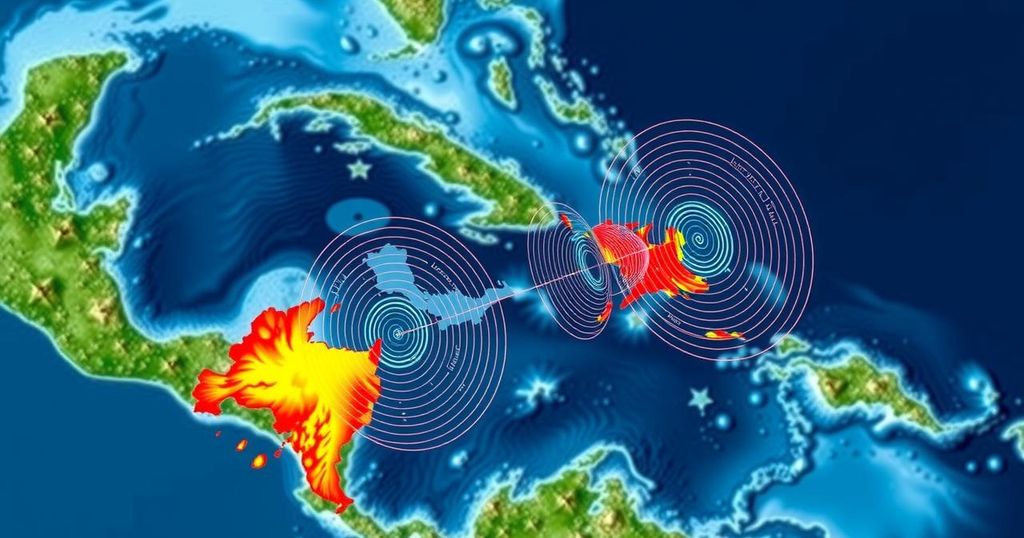A strong earthquake struck eastern Cuba on Sunday morning, causing panic and prompting thousands in Santiago to evacuate to the streets. The quake, estimated at 6 on the Richter scale, was followed by an aftershock, increasing anxiety around potential material damage and future tremors.
On Sunday morning, the population of Santiago de Cuba and other eastern regions experienced severe panic following a significant earthquake and a subsequent aftershock, prompting thousands to evacuate to the streets. The earthquake was felt in diverse municipalities in Santiago, as well as in neighboring provinces of Guantánamo and Granma, leading many residents to utilize social media to inform others about the event. The Facebook page “TV de Cuba” shared visuals portraying citizens outdoors amid the chaos. According to independent journalist Yosmany Mayeta Labrada, the first earthquake was unofficially estimated to measure around 6 degrees on the Richter scale. The manager of Operations and Relief for the Red Cross in Santiago de Cuba, Aris Arias Batalla, described the tremor as “very strong,” noting that it occurred at 10:51 a.m. A few minutes later, an aftershock was reported. Journalist Cuscó Tarradell mentioned on his Facebook that the second perceptible tremor had compelled thousands of residents to flee into the streets, many expressing their fears through tears. This sequence of tectonic movements has amplified the community’s apprehension, especially given the seismic activity associated with the Oriente fault. Although, as of now, no injuries have been reported, there is a substantial risk for material damage, and the residents remain vigilant for potential aftershocks or additional seismic events.
The occurrence of earthquakes in Cuba is primarily attributed to the various fault lines that traverse the island, particularly in the eastern region. This makes provinces like Santiago de Cuba and neighboring areas particularly susceptible to seismic activity. Residents are typically advised to remain prepared and vigilant, especially after a significant earthquake, as aftershocks are common and can exacerbate fears within the local population. The recent events underscore the critical need for effective communication and response strategies in the face of natural disasters.
In summary, the strong earthquake and subsequent aftershocks in eastern Cuba on Sunday caused significant panic among the residents, prompting mass evacuations into the streets. While no injuries have been reported, the potential for material damage and ongoing seismic activity has heightened community anxiety. The response from local authorities and the immediate actions taken by the public reflect the importance of preparedness and communication during seismic events.
Original Source: en.cibercuba.com






